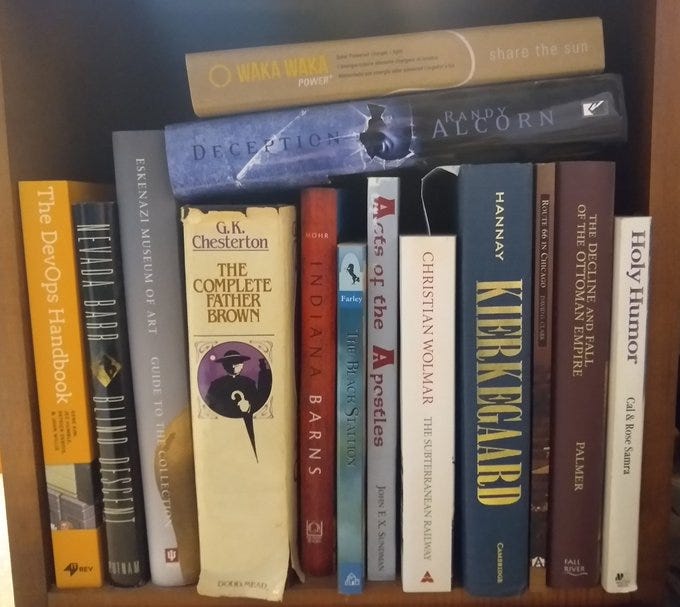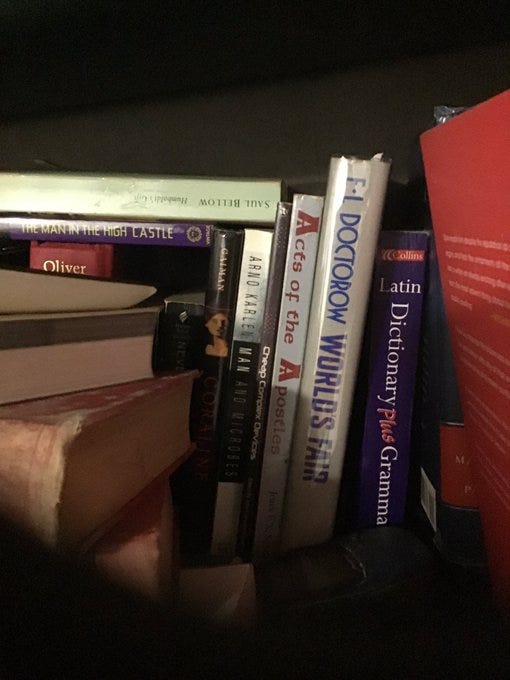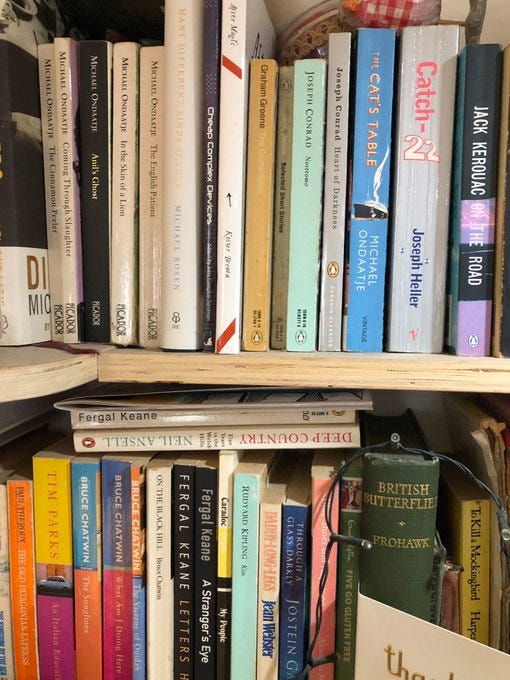New Here?
Welcome to Sundman figures it out!, where you can check out any time you like but you can never. . . Oh, never mind that. Here you’ll find themes that emerge, interleave, fade, and reappear. Incidents ramify, and their import may change upon being revisited. Wherefore reading earlier posts will enhance your experience of reading this and subsequent essays. But if this is your first, then like the song says1, you have to start somewhere, so you might as well start here.
Précis
My mother, or maybe it was my father, used to say, ‘Be careful who you choose as your friends, because that’s how people will judge you.’ Or if they didn’t say that in those exact words they said something like it. Something about how you’ll be known by the company you keep. Or maybe I’m confusing them with Jesus, who said, so they say, ‘By their fruits ye shall know them.’ But that’s not the same meaning is it.
Mary McCarthy chose The Company She Keeps as the title of her first, somewhat scandalous, novel. This isn’t the first time I’ve mentioned Mary McCarthy in this here substack. It won’t be the last. That’s all I have to say about Mary McCarthy today.
In the immediately prior post in this episodic autobiographical meditation, so called, I defined a ‘Sundman shelfie’ as ‘a photo of one or more of my books on a fan’s bookshelf.’ Today’s uncomplicated essay offers some shelfies that my good readers have sent me over the years. To which I have added some commentary. So, en avant. Let’s go.
Straw Dogs and SQL
The picture above shows the most recent arrival to Sundman Shelfie City. My new best friend Robin posted it yesterday on Mastodon in response to my essay Marc Andreessen was going to debug the internet or die trying, in which I introduced the concept.
Borrowing the words from Frank Zappa in his patter introducing Be-Bop Tango (Of the Old Jazzmen's Church) on the Roxy and Elsewhere album, Let’s examine this phenomenon. What have we here?
There’s a screenplay (Straw Dogs), a book on programming (SQL Antipatterns), a few well-worn titles from an earlier era (For Life and Liberty, etc), one of the first books in the genre that came to be known as ‘cyberpunk’ (Schismatrix Plus), a textbook on cell and molecular biology (The Neuron), recent ‘mainstream’ fiction (The Corrections), a book on project management, one on architecture, a few more . . .
What does this collection tell us about our friend Robin? That he is a reader with an open mind and a wide range of interests, that he likes to be challenged, that he is not fussy? That’s what this bookshelf is telling me, anyway.
And standing confidently among these marvelous books we see the complete Mind over Matter trilogy: Acts of the Apostles, by John F.X. Sundman; Cheap Complex Devices from John Compton Sundman; The Pains, John Damien Sundman. I tells ya, it thrills an author’s soul to see one’s books on such a shelf. It truly does.
Note: I was careless in how I named these photos when they arrived, so I’m not sure who sent which one. I could figure out where each shelfie came from but that would take work, so the rest of the pictures in this essay go unattributed. If you see yours, please claim it in a comment below.
Back in Black
So much to love in this one!
First, of course, the blackness. One can almost hear the plaintive call of tired fan ‘Mona’ on the Rolling Stones’ Get Yer Ya-Ya’s Out album just before that epic version of Jumping Jack Flash that you love so well: “Paint it black! Paint it black! Paint it black, you devils!”
Start with the obvious: Franz Kafka right smack-dab in the middle of the shelf. Is that black enough for you? The autobiography of Miles Davis, over there on the left, is Black in a different sense. Herodotus! Virgil! Saint Augustine, William Blake, Whitaker Chambers! You talk about black? The only thing missing is Johnny Cash!
And over on the right, a black-spined edition of Hofstadter’s Gödel, Escher Bach. If you’ve read my three-part essay Scared Firefighter Up in the Bucket you know something of how much space that book occupies in my thoughtosphere: a lot.
But if you haven’t read Scared Firefighter, this photo of inscription that Hofstadter wrote on the copy of GEB that I gave my wife as a wedding present will give you an idea:
And right next to GEB in this lovely assemblage is my Acts of the Apostles (the new edition, with the not-so-hideous cover) anchoring the entire thing. Well now, as my Irish grandmother Nana would have said. Well now indeed.
Are you beginning to see a pattern?
What do these shelfies tell you? That readers of what I write are people who have open minds and a wide range of interests, who like to be challenged, who are not fussy? That’s what these shelfies tell me, in any event.
Yeah, I’m bragging. But I’m bragging about you. You’re the one reading this right now, aren’t you? And I wrote it, didn’t I? You have an open mind; you have a wide range of interests; you like to be challenged; you are not fussy. Am I right or am I right? So sue me.
My comments from here out are minimal.



If you have one of my books on a bookshelf of your own, I ask you sincerely: please take a picture and send it to me. These things keep me going.
“Common People,” by Pulp.













At the ten-hours-since-posting mark, with one "like," no comments and no shares, A Quick Visit to Shelfie City is well on its way to being my least-loved post yet. Well, that's OK. I still think those shelfies are adorable and actually hold a lot of information. I wish all authors would solicit and post shelfies taken by their readers. I'm willing to bet the shelf of the typical readers of Tom Clancy novels don't look anything like the ones in this essay.
Ok... I'll bite. Speaking of books....
I responded to a comment about the Category Theory book in the photo that headed the Andreessen post, noting that Category Theory is the most recent of several attempts by Mathematicians to plaster over the cracks in their foundations that appeared between in the late 19th and early 20th centuries. When I was an aspiring mathematician, I noted, before Cat Theory was invented, I'd learned a different one.
Unfortunately, I couldn't remember its name.
I am now a code monkey. I know about algorithms. It took only a couple seconds to come up with one that would get me to the name of the approach I'd studied. The professor under whom I'd studied was a legendary proponent of the approach. If I looked him up, I'd be certain to come across its name. Unfortunately I couldn't remember his name, either. All I needed to do, though, was go through the names of all of my former professors. I went to the web page for my school that listed all of the emeritus math professors.
I spent a thoroughly enjoyable half hour, recalling the names of former teachers. There was the guy that, incredibly, bolstered me through his class, because I needed it to graduate, even though I was taking a dance class that overlapped with his. There was the guy that really didn't have a lot of time for students: he left to start his business at the end of the quarter. There was the guy that gave me a B because he was my dad’s student. All great fun until, down in the "S"s I recognized my guy: a genius, a legend, a great guy and a pretty good teacher. A quick trip to Wikipedia and, voila: Intuitionism.